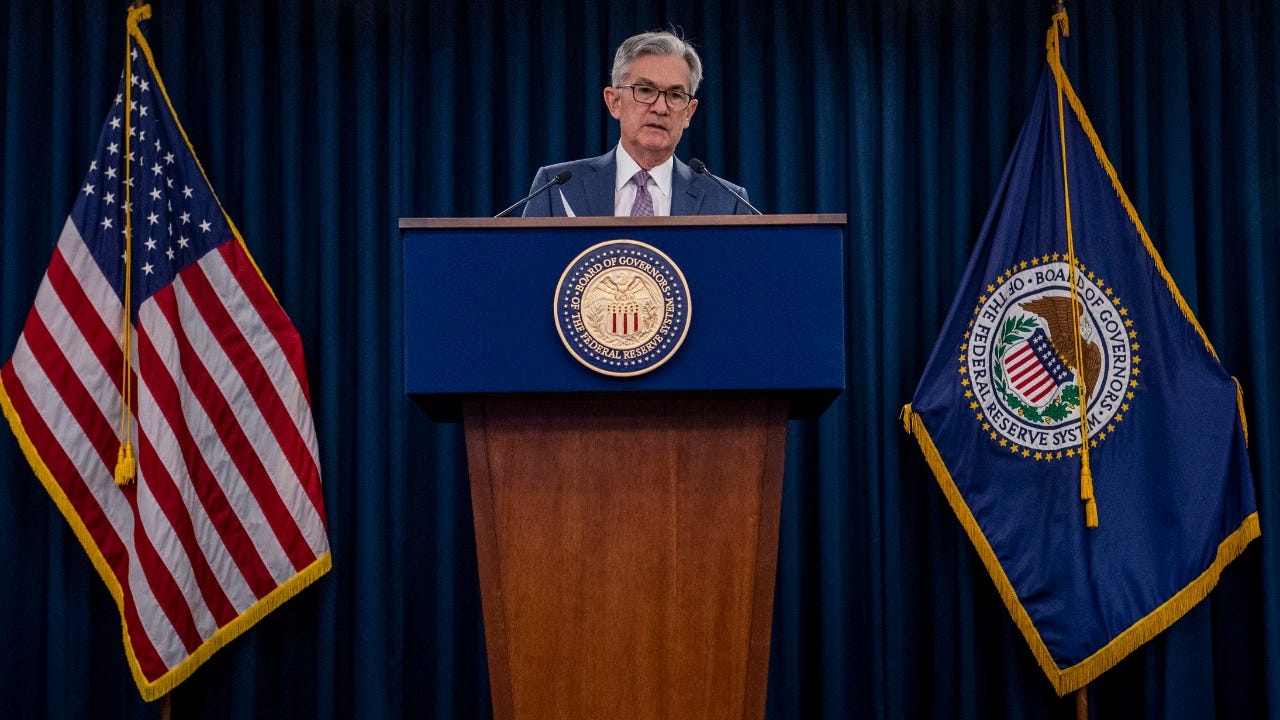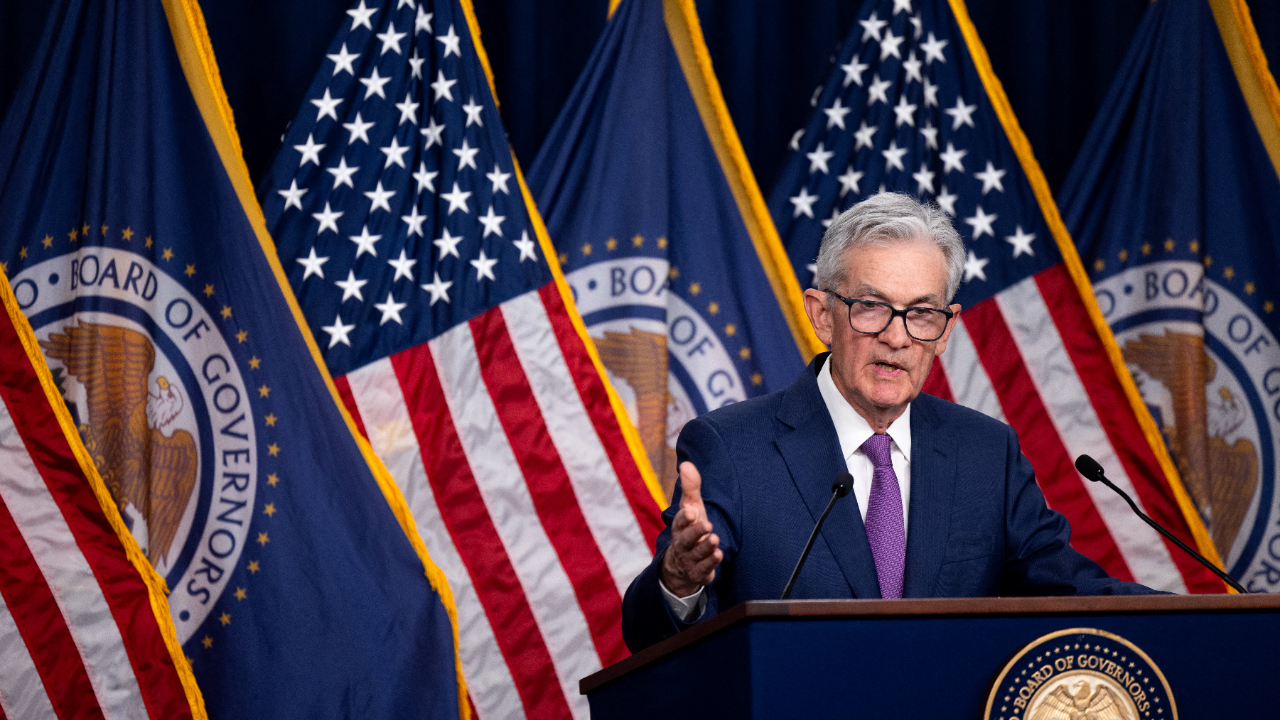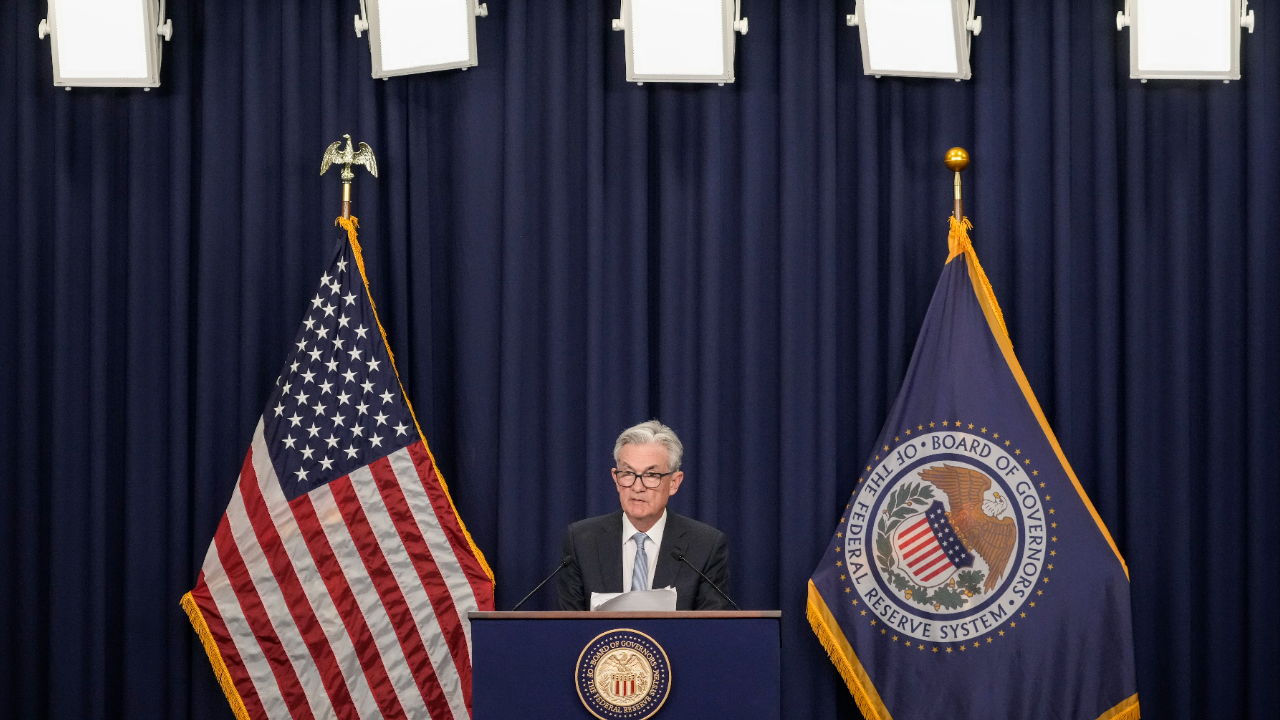Fed keeps interest rates at near-zero as coronavirus rebound sputters

The Federal Reserve left borrowing costs alone Wednesday and underscored its priority to keep helping the economy rebound from the coronavirus pandemic, closing out one of the most nonstop policymaking years in history at a time when the economy’s recovery is starting to look shaky.
The Fed’s policymaking arm left its lending rate pegged in a target range of 0-0.25 percent, the lowest level in history. That key borrowing rate acts as a benchmark for other types of borrowing and savings products throughout the economy. But while the Fed didn’t make any changes, consumers could still feel it in their wallets if savings account and certificates of deposit (CDs) walk down yields even further in the coming months. Meanwhile, borrowing rates for auto loans, credit cards and home equity lines of credit (HELOC) could get even cheaper, if at all.
Policymakers at their December meeting had to grapple with an increasingly fragmented outlook, with downside risks rising as federal stimulus programs expire at the end of December and coronavirus cases surge to new records. At the same time, the U.S. economy is expected to rebound aggressively once a vaccine is widely distributed to the broader public, lifting demand once the financial system’s consumer powerhouse feels safe to venture out of their homes again.
The Fed signaled that it’s more optimistic about employment and growth in the years ahead but reaffirmed plans to keep interest rates at their rock-bottom levels through at least 2023, according to forecasts updated in December. Officials are also planning to maintain their asset purchases at “at least” their current pace of $120 billion a month until “substantial progress has been made” toward the Fed’s goals of maximum employment and stable prices, though punted on making any more changes.
Fed Chairman Jerome Powell at a post-meeting press conference called the recent uptick in coronavirus cases “particularly concerning” and said fiscal action will play just as important of a role in the months ahead.
“The faucet of Fed accommodation remains wide open but that won’t put cash in the pockets of unemployed consumers and ailing small businesses,” says Greg McBride, CFA, Bankrate chief financial analyst. “As virus cases mount and coronavirus restrictions return, the lack of additional stimulus from Congress is putting the economic recovery at risk. Widespread availability of vaccines in 2021 is reason for hope but we have to get there first.”
Economy’s rebound and upcoming vaccine distribution
The Fed can close out the year knowing that it’s emergency efforts largely got the job done. They helped restore proper functioning to credit markets and ensure loans aren’t just cheap but accessible as consumers and firms weather the outbreak’s intense economic storm. The Fed since March has rolled out a suite of 13 different emergency lending programs, ramped up bond buying and its involvement in the market for short-term loan agreements, while also quickly slashing interest rates to zero when trouble first arrived.
But nine months after the crisis first developed in the U.S., the economy is nowhere close to being out of the woods. And unlike in March, the Fed is finding itself running low on ways to give the financial system more juice to make it through the months ahead.
Employers in November added the fewest number of jobs since the recovery began in March, while applications for unemployment insurance are picking up again. That comes as states are rolling back reopenings to stop the coronavirus from spreading even more as caseloads skyrocket. Early inoculations and a quick arrival of the coronavirus vaccine do offer a glimmer of hope, but Fed officials have a long way to go.
Officials’ forecasts show unemployment sinking to 5 percent by the end of 2021 and 4.2 percent by the end of 2022. Even more meaningfully, joblessness is projected to fall to 3.7 percent by the end of 2023, close to the half-century lows that persisted before the coronavirus crisis upended the global economy.
But policymakers aren’t expecting to lift off on rates, with all but four officials expecting no rate moves through at least 2023. Those expectations highlight the Fed’s new framework, with officials abandoning their previous monetary policy practice of preemptively hiking interest rates to ward off inflation.
Officials have indicated that they’d like inflation to rise to 2 percent and be on track to “moderately exceed” 2 percent “for some time,” in addition to joblessness reaching levels that are consistent with officials’ estimates of maximum employment. Based on the Fed’s projections, price pressures won’t be rising to those levels anytime soon, with the U.S. central bank’s preferred gauge of inflation not expected to touch 2 percent until the end of 2023.
“You have to be honest with yourself about inflation these days,” Powell said. “It is not going to be easy to have inflation move up, and it’s going to take some time.”
But that raises credibility concerns for the Fed’s new policy, particularly because of inflation’s psychological component. If consumers aren’t expecting price pressures to pick up, they’ll be more inclined to hold off on making purchases and demand will weaken to the point that it feeds into low inflation.
“It’s the Jekyll and Hyde of average inflation targeting,” says David Beckworth, senior research fellow at the Mercatus Center at George Mason University and a former Treasury economist. “On the one hand, it wants inflation above 2 percent, so the average will go up. On the other hand, it’s signaling through its forecasts that it’s not going to be able to do that anytime soon.”
Stimulus and the road to recovery
Crucial to how the next few months play out will be any fiscal aid, but legislators have still not passed another substantial bill since the CARES Act back in March, letting a key supplemental unemployment insurance (UI) program lapse during their inaction. While President Donald Trump in early October signed an executive order boosting weekly checks by an additional $300, most of that money has already run dry. Almost 10 million more Americans will be unemployed at the end of this year than before the pandemic began.
Up in the air is whether President-elect Joe Biden can bring lawmakers to a consensus to enact another major stimulus deal, and the fate of another big package might be up to the results of January’s Georgia Senate run-off elections. Former Fed Chair Janet Yellen, who was announced as Biden’s pick for Treasury Secretary, will likely have to take that gridlock by the horns if she’s confirmed, serving as Biden’s key liaison to negotiating relief packages.
Current Treasury Secretary Steven Mnuchin has been representing the Trump administration in negotiations with House Speaker Nancy Pelosi, but came under fire when deciding to shut down key Fed programs that funnel credit to corporations, states and municipalities, as well as mid-sized firms and nonprofits.
What this means for you
Bright spots are poking through the clouds when it comes to the U.S. economic rebound, but much could go wrong between now and the goal of reaching herd immunity thanks to the vaccine. Preparing for any hardship includes steps that consumers are already familiar with taking: cutting back on expenses as much as possible to boost your emergency savings. Experts typically recommend accounting for six months’ worth of individuals’ expenses.
Individuals should prioritize paying off any debt, particularly high-cost credit card borrowing, with rates at rock-bottom levels for years to come. Others will benefit from shopping around for the most competitive rates on savings and loan products, particularly homeowners considering refinancing their mortgage.
“Homeowners can take advantage of the low-rate environment by refinancing their mortgage, generating hundreds of dollars of savings each month and tens of thousands of dollars in savings over the life of the loan,” McBride says.
While CD and savings yields have come down dramatically since the start of the coronavirus crisis in March, consumers can still find options on the market that are higher than that of a traditional brick-and-mortar bank. But remember: Parking your cash isn’t necessarily about making a return, it’s about safeguarding your finances. Make sure your emergency fund is in a liquid and accessible account.
Americans facing hardship or job loss should also reach out to any lenders or firms they regularly pay a bill to, to see if they can work out some sort of forbearance program. Experts say it’s always worth a shot to ask, even if some federal-backed programs have already expired.
Meanwhile, lawmakers on Wednesday said they are moving closer to a stimulus deal that would provide enhanced unemployment checks. Keep an eye on Capitol Hill, where Americans are likely to see more targeted relief than they would through the Fed.
The Fed “is in a straitjacket, stuck with really low rates,” Beckworth says. “That straitjacket on them is only going to get tighter if they’re not proactive and aggressive.”
Learn more:
- Winners and losers from the Fed’s latest decision
- 3 ways savers can handle falling interest rates
- Here’s what to do if you’re still jobless by the time your coronavirus unemployment benefits run out
You may also like

Fed remains on hold, keeps forecast for three rate cuts in 2024





